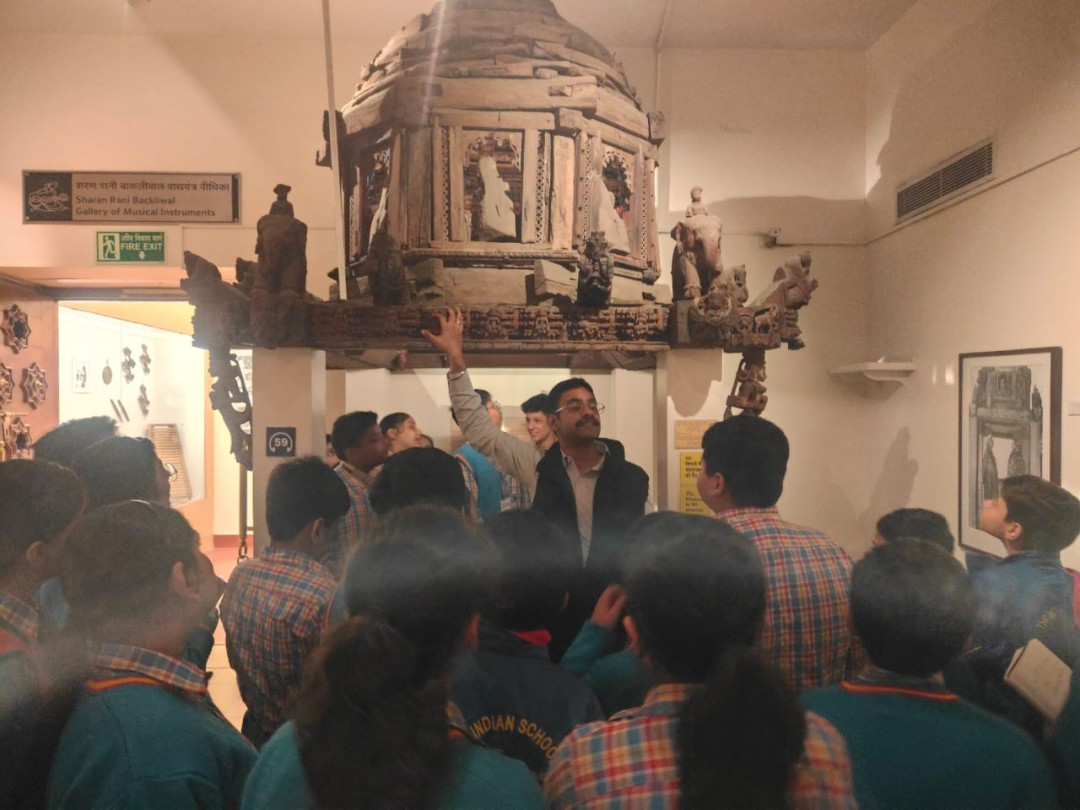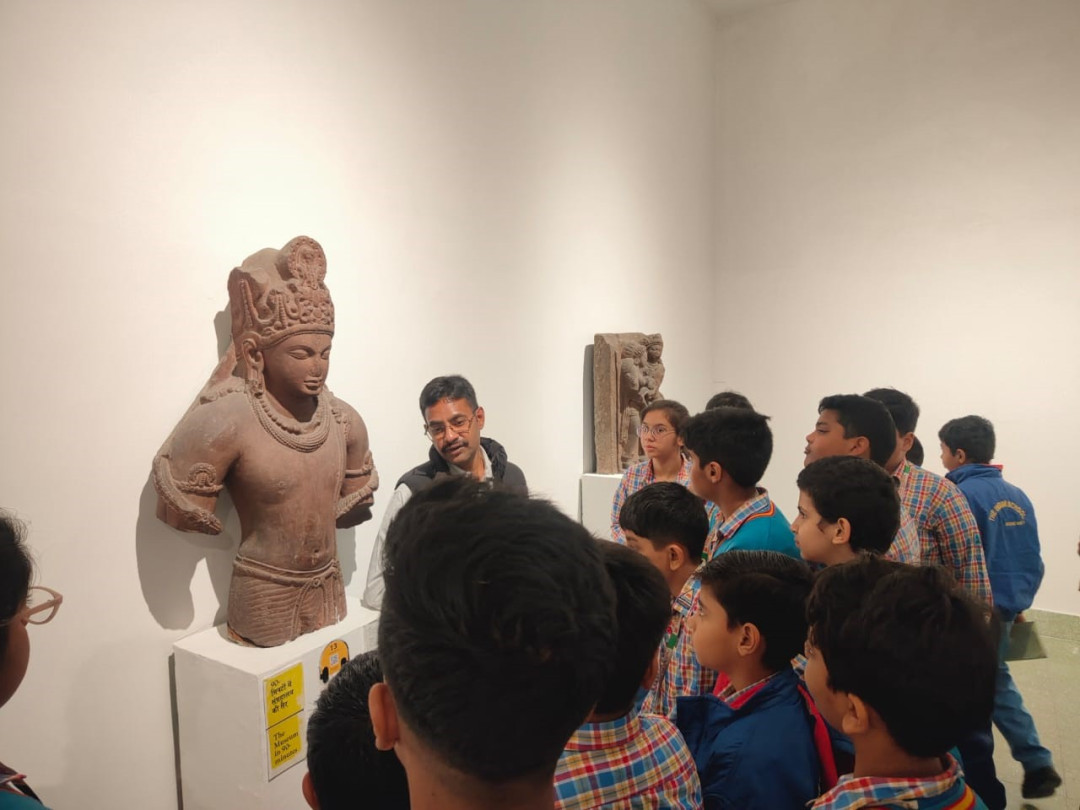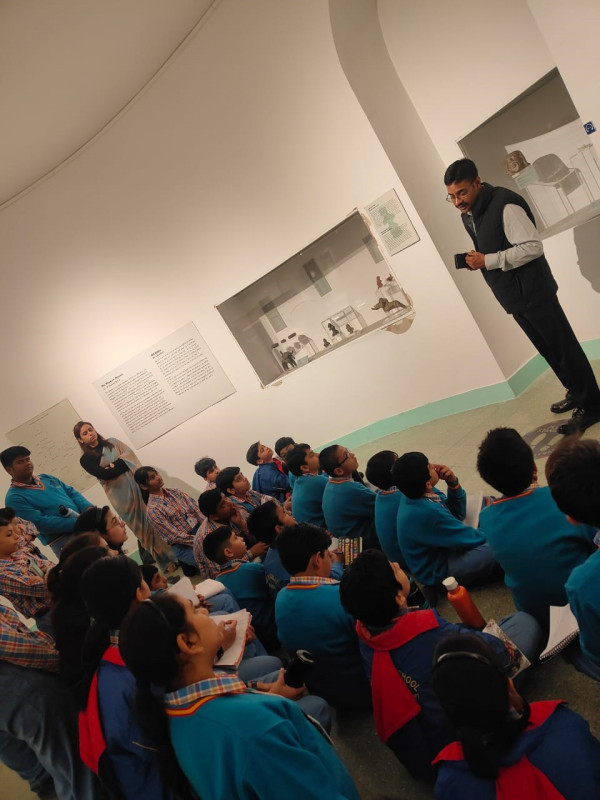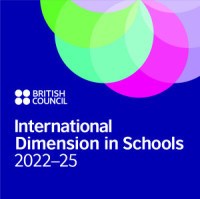Classes 7 and 8 visit the National Museum
The Indian School-Second Shift, in an endeavour to promote holistic learning and knowledge of our varied cultural heritage, conducted a visit to the National Museum on 16 February, 2024. One of the largest museums in India, it was established in 1949 and holds a variety of articles ranging from the pre historic era to modern works of art. Students of classes VI and VII, accompanied by their teachers, took a guided tour round the museum.
The first gallery that the children visited held finds from the Harappan civilisation. The most famous among these finds were the priest head, the dancing girl made in bronze, the skeleton excavated at Rakhigarhi in Haryana, terracotta images of the Mother Goddess and clay pottery. Vivid descriptions of the Harappan pictographic script, which served as a great source of understanding the civilisation, also attracted the students’ attention.
The students also witnessed the Maurya, the Shunga and the Satavahana galleries, which house objects from the 4th to the 1st century BCE. The gallery also houses fragments of railings from various ancient stupas that are carved with episodes from Buddha's life. One of the major attractions was the railing showing Sage Asita's visit to baby Siddhartha and his prediction about what the future held for the young prince. Another treasure were the Bharhut railings that depict the story related to the relics of Buddha, which were handed to eight rulers. A typical feature, which the students observed, was that the sculptures did not depict Buddha in the physical form. He is always shown by symbols like the Dharmachakra, the Bodhi tree, a vacant throne, etc.
The students were also given detailed descriptions about the various schools of art such as the ones at Gandhara and Mathura. The Gandhara School had a huge influence on Greek iconography and the themes were mainly Buddhist. A detailed description of the ‘Standing Buddha’, in Grey schist stone was given to the students. The bronze gallery contained bronze sculptures of various gods and goddesses. The most intricate amongst these was a bronze sculpture of Nataraja.
The Buddhist art section exhibited the sacred relics of Buddha excavated from Piprahwa in Uttar Pradesh. These relics along with the other objects stimulate a sense of devotion, dedication and love of humanity.
The last gallery comprised over 17,000 miniature paintings. These paintings show the rich heritage of Indian art through the centuries. These paintings belong to major styles such as Mughal, Deccan, central Indian, Rajasthani, Pahari, and are done on palm leaves, cloth, wood, leather, painted manuscripts, etc.
It was an informative educational excursion for the young students and an enriching experience for the curious minds. It enlightened students about the glorious past of India, while stimulating their interest in history and archaeology.











